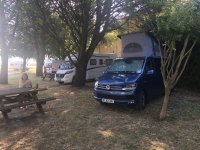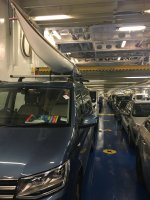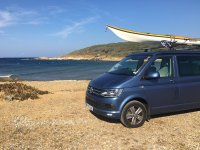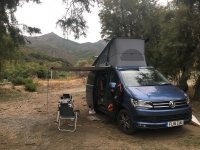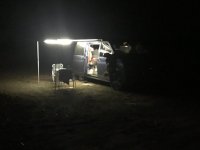11. Can I drink the water?
Est-ce que c'est de l'eau potable? - one of my very few intelligible French phrases but one that was vital back-packing through Europe in the early 80s, was generally answered "the water - of course you can drink it", in perfect English. Or at least with "for drinking - yes". This is Europe for goodness sake - not deepest Africa! Actually it was a little bit more complicated than that so I thought a few musings on our aqua experiences might be of interest.
CamperLife is a slightly surreal existence which runs in parallel with the real world around us. Here we are travelling in a first world European country and we find ourselves worrying about the accessibility of water - how much is in the tank? how long will it last? will there be water available where we stay tonight? can we drink it / clean our teeth with it / cook with it / wash-up with it / keep the dog alive with it etc. ? (Actually we didn't take the dog, Charlie, so that was one less thing to worry about).
There are lots of threads here about water and whether people use the fresh water in the tank for drinking. For right or wrong - we use it for pretty much everything and have never had a problem. My only precautions are to give the tank a sterile flush once a year, always drain the tank after a trip and be reasonably careful about where we top-up.
We stayed in a mixture of Camperstops and campsites, Most, but not all, had fresh water available but at some it was an additional charge so we tried to fill up where it was free or included in campsite fees wherever possible (is it the Scotsman in me - having shelled out so much on the van why do I make so much effort to save a couple of Euros paying for water?)

.
We set-out with a fresh-water sensor that helpfully provided random and inconsistent readings, so we were a bit worried about running out of water. We found that the tank consistently lasted us two days using it for drinking, cooking and washing up. That was being reasonably careful but not manically so. And we were probably drinking around 3 litres each per day of that.
We carried a hose for filling up.
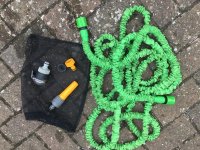
Our set-up included a 15m stretch hose and the various tap adapters etc seen in the picture. I think we used them all except the smaller threaded adapter. Your own hose is essential. Few sites provided a hose and even where they did who's to know that it hasn't been used for flushing out - well you can imagine. The flexible hose is great. It takes up very little space. Only minor drawback is that it needs a fair water pressure to expand to its full 50ft length. Quite often the pressure was insufficient - so you just need to park a bit closer. The net bag is actually a golf ball bag bought for about a quid from Amazon. That proved essential as the first time I put the wet hose back in its nice cardboard box after using it I unsurprisingly got a soggy cardboard box - duh.
I stand by my comments about drinking water being available everywhere but a lot of sites do have both drinking and non-drinking water available. I guess the non-drinking water is collected rainwater. I presume the idea is non-drinking for washing up, drinking for - well, drinking. This isn't always obviously signed, and you often find yourself asking maintenance staff rather than reception staff so my introductory phrase did come in handy.
It's hot - "damn hot" - in Corsica in July

(actually apparently it normally isn't too bad but this year is exceptionally hot) so we drank a lot of water. We got a regime going of keeping a couple of large bottles in the fridge (at the back where they developed their own ice cubes) and used these to top up smaller 50 / 75cl bottles to carry around. We did find some good 75cl bottles of water in a French supermarket that were a good fit for the cooled compartment in the dash.
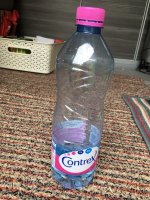
Actually - six of these were the only bottled water we purchased all trip. (Note to self - check whether we have actually kept any of these elusively sized bottles).
Would I do anything different from a water perspective next trip? I will probably get a 10 litre 'emergency' water container to keep in the boot for peace of mind. But actually, we wouldn't have needed it. Two other lessons reinforced were:
- always fill-up if you are at a site with free water available - it takes about 5 mins
- always have change available - many camperstops have coin operated water



 . There'll be something over the weekend though.
. There'll be something over the weekend though. .
.


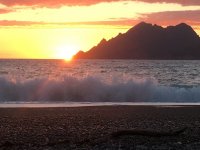
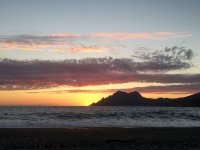
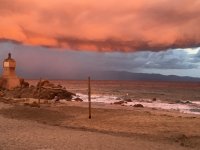
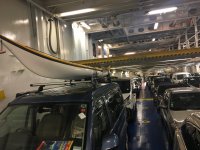

![IMG_1786[1].JPG IMG_1786[1].JPG](https://vwcaliforniaclub.com/data/attachments/22/22185-83d22c1a2c0afa90ed7ac7b726c60aaf.jpg)

